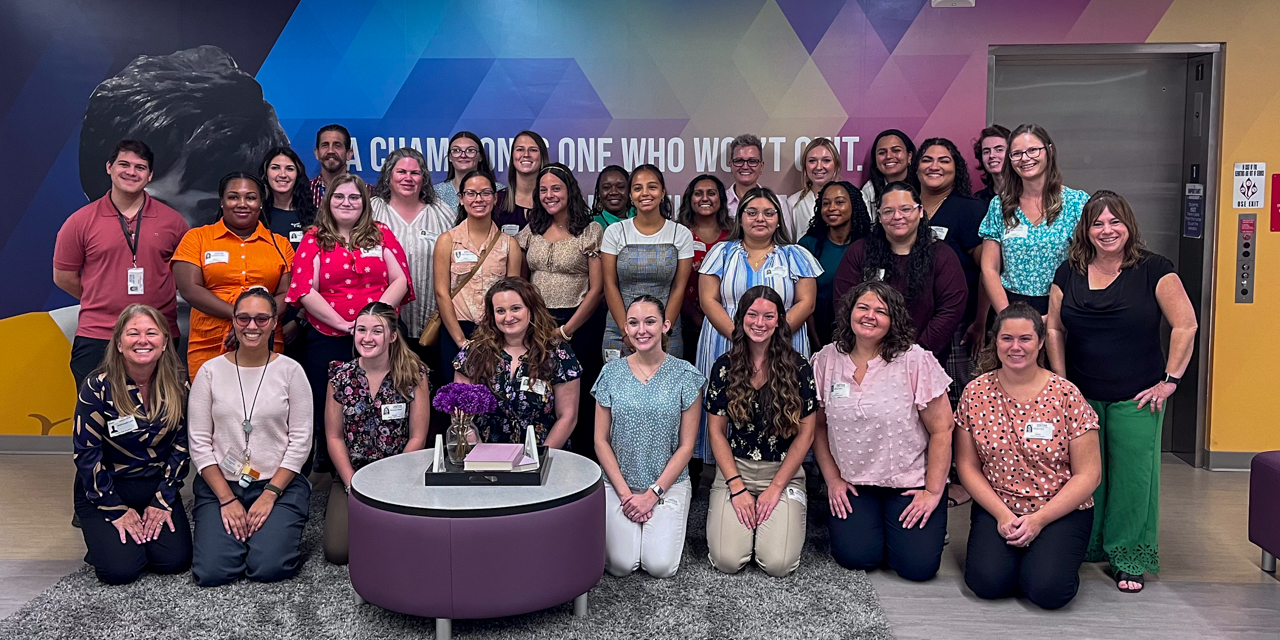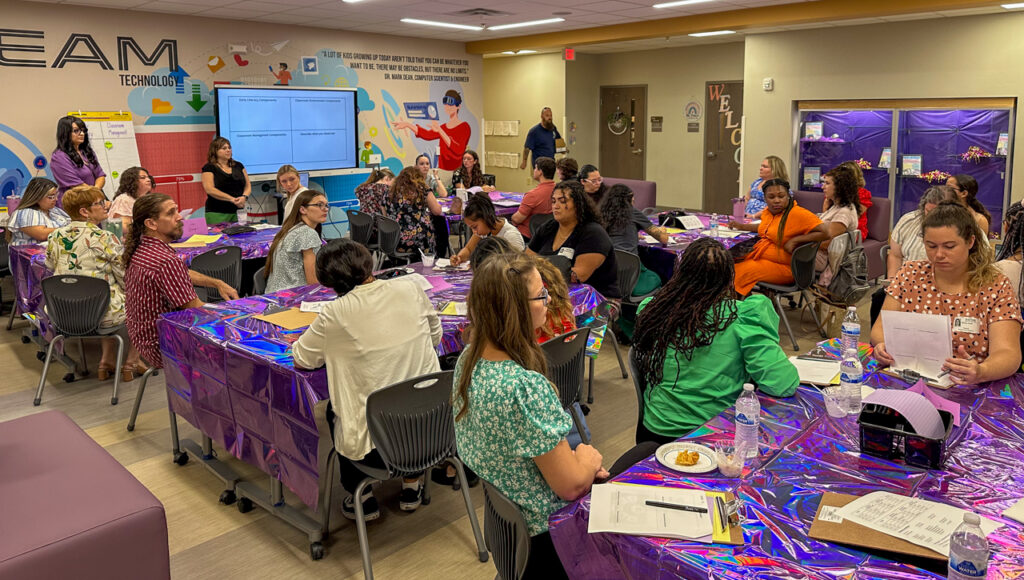 LSSC Bachelor of Science in Elementary Education students with Aurelia M. Cole Academy staff and Dr. Stephanie Luke (front row, far left) and Marni Kay-Martinez (far right).
LSSC Bachelor of Science in Elementary Education students with Aurelia M. Cole Academy staff and Dr. Stephanie Luke (front row, far left) and Marni Kay-Martinez (far right).
Students from Lake-Sumter State College’s Bachelor of Science in Elementary Education program recently participated in a professional development day at Aurelia M. Cole Academy in Clermont. The hands-on experience was aimed at deepening their understanding of early literacy skills, classroom management, and instructional strategies in a real-world setting.
In partnership with Lake County Schools, their visit to the K-8 academy was intentionally scheduled during kindergarten through second-grade reading instructional time. The goal: to see the theory they’ve learned in class come to life and understand how to integrate these foundational skills into effective instruction.
The 29 aspiring teachers observed various early literacy instruction techniques, allowing them to link classroom theory to practice by seeing how teachers engaged students with small group instruction, direct teaching, and strategic use of classroom space. From students gathering on the carpet for a group activity to breaking into smaller clusters for personalized attention, the future educators saw a wide array of methods used to maintain student engagement.
Classroom management was another focus of the visit. Students noted how teachers at Aurelia Cole Academy effectively used strategies such as posted classroom expectations signed by both students and teachers, token economies, and positive behavior supports. The student visitors witnessed how these methods promote a calm and organized learning environment, helping elementary students stay on task and engaged.
This professional development day gave the students an invaluable opportunity to witness the integration of research-based strategies into real-world teaching, reinforcing their learning and preparing them to implement these methods in their future careers as educators.
Professor’s Reaction: Bringing Theory to Life
Dr. Stephanie Luke, Executive Director of Elementary Education, and Marni Kay-Martinez, Program Director for Reading & ELA, shared that the experiences brought to life the concepts and research we’ve been teaching throughout this semester.
“This professional development day allowed us to ensure that the students are seeing strategies being implemented based on current research,” said Dr. Luke. “We’re proud that these student-teachers are already working in the schools, and it’s important to us that they observe these practices so they can implement them in their current roles and future classrooms.”
“Students were making connections of the theory to the practice, and seeing the benefits of using the research-based strategies that we are teaching them,” said Kay-Martinez.

Student Reflections on the Experience
Felicia Lopez appreciated the classroom transitions she observed. “I saw smooth transitions using countdowns and reiterating expectations, something I’ve been trying to apply in my role as a substitute. Watching the progression from Kindergarten to second grade also gave me a deeper understanding of how literacy skills build on each other.”
Abbygail Goad shared, “There were so many things that related back to what we’ve been learning, like phonics, phonemic awareness, and word building. It was exciting to see these concepts being taught to a class of tiny humans. It was also interesting to see how similar students’ needs are across different ages, even if the content is different.”
For Kaylin McCann, seeing a phonics lesson in action was particularly impactful. “Watching the kids decode and encode words was awesome. I was also impressed by how well even the younger students followed classroom expectations, which shows how important it is to set routines early.”
Alina Caban-Perez reflected on how classroom management and instructional strategies came together. “The classrooms were beautiful and student-centered. I saw clear rules and routines, strong teacher-student relationships, and engaging lessons, all contributing to an effective learning environment.”




